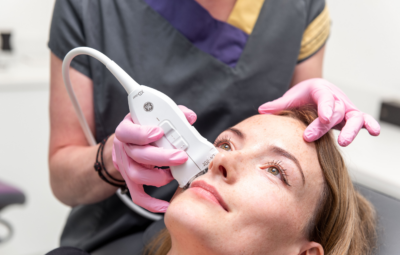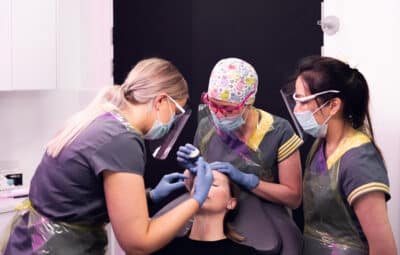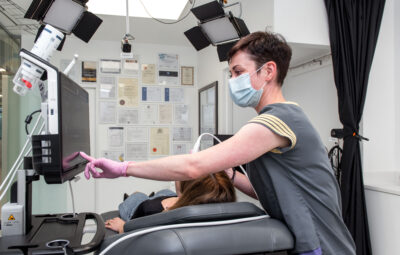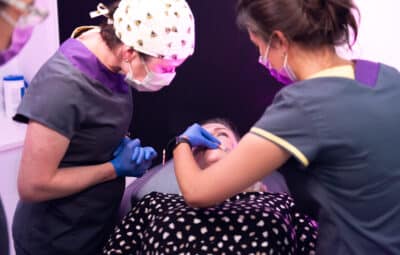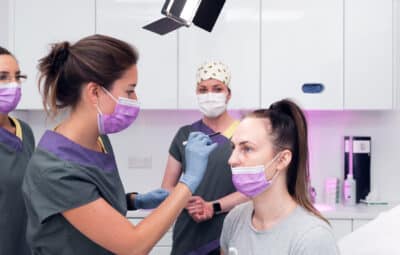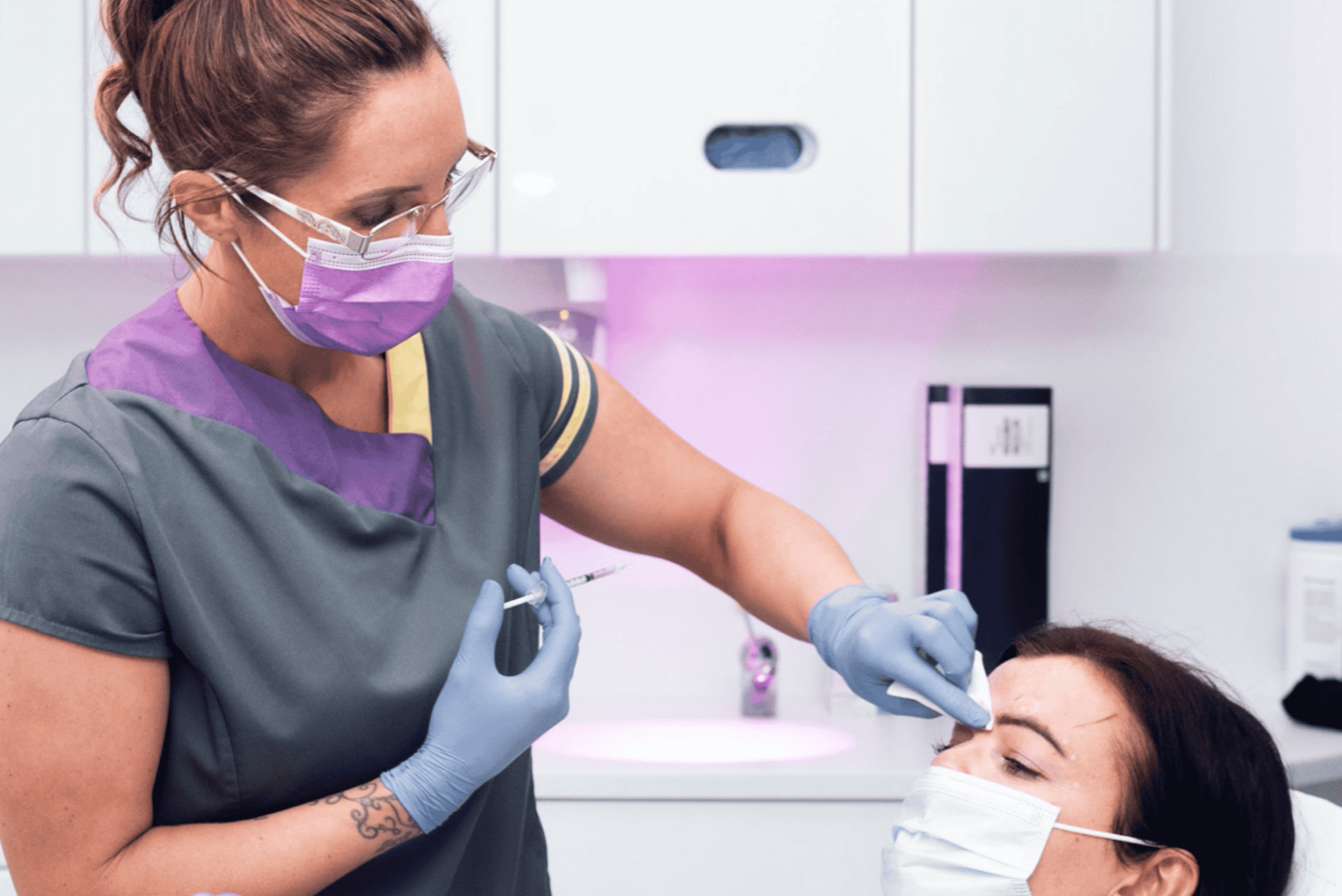
Droopy Eyelid Botox Complication: What You Need to Know
9 October 2025
In this post:
- Eyelid ptosis (droopy eyelid) is a recognised but preventable Botox complication, usually occurring 3–7 days post-treatment due to toxin diffusion affecting the levator palpebrae superioris muscle.
- Differentiating eyelid ptosis from brow ptosis is crucial as they have different causes, presentations, and management strategies.
- Management includes apraclonidine 0.5% eye drops, gentle stimulation, and (for advanced practitioners) targeted toxin placement, though prevention remains far more effective.
- Ptosis from Botox has professional and reputational consequences, highlighting the importance of clear patient communication, meticulous documentation, and comprehensive training.
A droopy eyelid, medically known as ptosis, is one of the most recognised examples of botched Botox. While not medically serious, it can be a great cause of alarm for patients when they wake up to find their eyelid drooping a few days after their treatment. While it occurs in less than 5% of toxin treatments overall, this rate drops to less than 1% among experienced injectors who come from a medical background.
Understanding how to prevent, recognise, and manage a droopy eyelid after Botox is essential knowledge for any injector. You can’t think of eyelid ptosis as merely a clinical complication that will resolve within a few weeks or months. It’s a professional liability issue that can damage your reputation and diminish patient trust in your practice.
Most cases of Botox eyelid ptosis are entirely preventable through a proper understanding of facial anatomy, correct injection technique, and appropriate patient selection. The practitioners who avoid this complication aren’t ‘lucky.’ They’re properly trained.
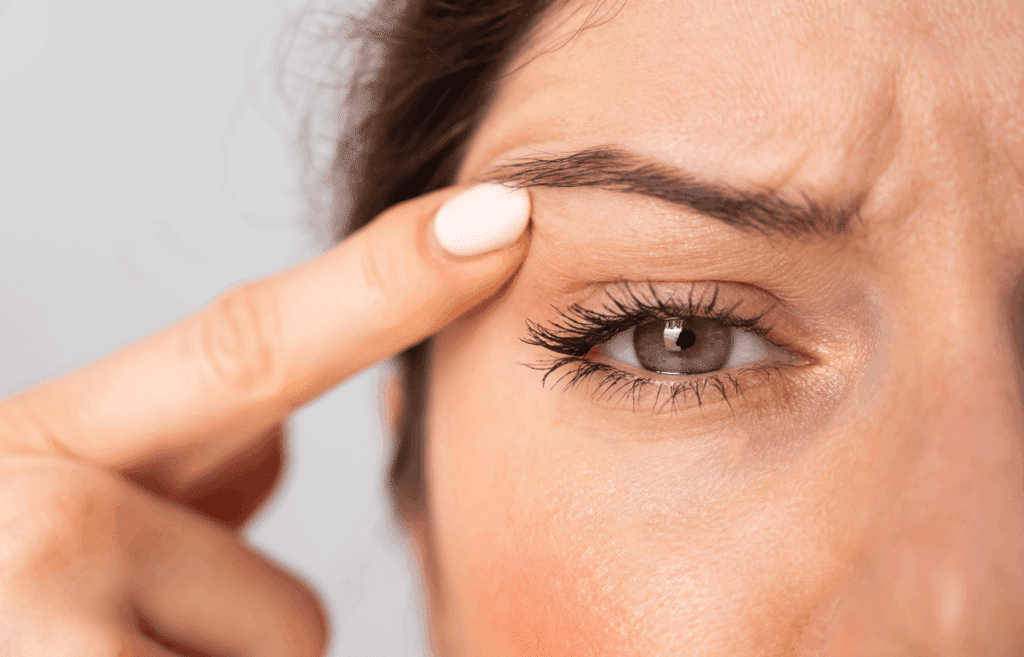
What is Droopy Eyelid After Botox?
Ptosis refers to the drooping or lowering of an anatomical structure. It isn’t exclusive to the eyelid area. In aesthetic medicine, we encounter two distinct types of ptosis following botulinum toxin treatment: eyelid ptosis and brow ptosis.
Eyelid ptosis occurs when toxin diffuses through the orbital septum and affects the levator palpebrae superioris muscle, the primary muscle responsible for lifting the upper eyelid. This mechanism involves either direct tracking of the toxin along tributaries of the superior ophthalmic vein or simple diffusion through the orbital septum onto the pre-periosteal plan where the levator muscle operates.
The incidence rates we mentioned before tell a compelling story about the importance of proper training and injector background. FDA studies report ptosis occurring in 5.4% of botulinum toxin treatments overall, but this number drops dramatically to less than 1% when treatments are performed by experienced, properly trained injectors.
As Dr MJ Rowland-Warmann, founder of the Smileworks Aesthetic Training HUB, explains: ‘The difference between a 5% complication rate and a less than 1% complication rate comes down to proper training, understanding facial anatomy, and precise injection technique.’
The Two Types of Ptosis
Eyelid Ptosis
True eyelid ptosis presents as a drooping of the upper eyelid margin relative to the pupil, not the eyebrow. This distinction is crucial because many beginner injectors incorrectly diagnose brow ptosis as eyelid ptosis. This is problematic because the treatment for brow ptosis versus eyelid ptosis is very different.
Eyelid ptosis typically manifests 3-7 days post-treatment and can cause significant functional impairment. Patients may experience difficulty fully opening the affected eye, visual field restrictions, and substantial cosmetic concern. The condition typically resolves within 3-4 weeks as the toxin effect wears off, though this timeframe can feel endless for the patient. Just because it resolves in the span of a few weeks doesn’t diminish the distress this complication can cause for your patient.
Brow Ptosis
Brow ptosis occurs when the frontalis muscle is over-treated or inappropriately treated in isolation, allowing the depressor muscles of the glabellar complex to dominate. This creates a lowered or flattened brow position that can transmit pressure to the upper eyelid area, creating a sense of heaviness and apparent drooping.
The key diagnostic difference lies in the anatomical reference points. Brow ptosis affects the position of the eyebrow relative to the orbital rim, while eyelid ptosis affects the eyelid margin relative to the pupil. This distinction determines your entire treatment approach and expected outcomes.
How to Identify Droopy Eyelid from Botox
Recognising ptosis requires systematic facial assessment that distinguishes treatment-related complications from pre-existing conditions or normal post-treatment effects. It’s remarkable how often patients suddenly become aware of facial asymmetries after cosmetic treatments and immediately blame the procedure.
Always begin with your before and after photos. Pre-existing eyelid ptosis is very common and usually presents as a mild, symmetrical drooping.
For genuine treatment-related ptosis, timing provides crucial diagnostic information. Botulinum toxin-induced ptosis typically presents 3-7 days after treatment, not immediately. If a patient calls in a frantic panic that they have a droopy eyelid within hours of treatment, take a look at the before photo and determine if they already had presented with mild eyelid ptosis.
Red flag symptoms that warrant immediate attention, however, include sudden onset of severe drooping, vision impairment, or symptoms suggesting neurological involvement. While botulinum toxin complications are typically temporary and self-limiting, conditions like Horner’s syndrome or myasthenia gravis can present similarly and require urgent medical evaluation.
How to Reverse Droopy Eyelid from Botox
First-Line Treatments
Apraclonidine 0.5% eye drops remain the most effective first-line treatment for eyelid ptosis. These alpha-adrenergic drops stimulate Müller’s muscle contraction, temporarily retracting the eyelid by 1-2mm. The effect lasts 4-6 hours and requires regular reapplication throughout the day.
Dosing involves 1-2 drops applied to the affected eye three times daily. However, these drops are contraindicated in patients with closed-angle glaucoma or ophthalmic history. Always verify patient medical history before recommending this treatment.
Electric stimulation represents another approach. The simple ‘electric toothbrush trick’ involves gentle stimulation of the posterior eyelid area for several minutes daily. Dr MJ warns that while formal efficacy studies for this are lacking, her clinical experience suggests this mechanical stimulation can accelerate return of muscle function.
Advanced Interventions
For injectors with training in advanced Botox areas, strategic toxin placement can sometimes correct ptosis complications. Eyelid ptosis may respond to pre-tarsal injection of 1 unit of Botox® to relax the opposing orbicularis oculi muscle. If you’re dealing with brow ptosis, this can sometimes be addressed through targeted treatment of the depressor muscles, particularly the corrugator supercilii.
However, these interventions require extensive and should never be attempted by novice injectors. Incorrect placement can worsen the complication or create additional problems.
How to Prevent Eyelid Ptosis
Prevention remains far more effective than any post-complication management strategy. Proper technique focuses on several critical factors that separate experienced injectors from those prone to complications like a droopy eyelid after Botox.
Injection placement requires precise anatomical knowledge. For glabellar treatments, maintain at least 1cm distance above the brow and never inject lateral to the mid-pupillary line. Forehead treatments demand even greater caution, with injections placed at least 2-4cm above the brow. Never treat the frontalis muscle in isolation without addressing the glabellar complex.
Botox needle depth and angle significantly influence diffusion. Always angle needles superiorly and use digital pressure on the supraorbital rim to compress tissues and reduce the risk of deeper toxin migration.
Patient selection is also important. Perform a thorough facial assessment of their frontalis muscle tone, brow position, and pre-existing asymmetries during their consultation. Patients with heavy brows, significant skin laity, or history of facial surgery may require modified approaches or be unsuitable candidates for certain treatments.
Dr MJ’s approach to prevention is systematic: ‘Understanding facial anatomy through static diagrams is one thing, but visualising it in real time through facial ultrasound transforms your practice entirely. When you can see exactly what you’re injecting and understand the tissue planes involved, prevention becomes much more achievable.’ (More on our facial ultrasound course later.)
Professional Implications of Droopy Eyelid Botox
Ptosis complications carry implications far beyond temporary patient dissatisfaction. Regulatory bodies in the UK are increasingly scrutinising aesthetic complications, particularly when they suspect the injector has inadequate training or poor clinical judgement. Proper documentation, informed consent, and evidence of continuing education have become essential for protecting your professional reputation.
Effective patient communication can prevent many formal complaints. Ensure patients understand ptosis as a recognised, temporary complication before treatment. Provide clear Botox aftercare instructions and emergency contact information. If complications occur, respond promptly with reassurance, appropriate solutions, and regular follow-ups.
Remember that most ptosis cases resolve within a few weeks. Your role involves managing patient anxiety, providing effective symptomatic treatment, and maintaining professional confidence throughout the resolution period.

Achieve Excellence Through Education
The complexity of preventing and managing ptosis complications highlights why comprehensive aesthetic training isn’t just optional; it’s essential for patient safety and professional protection. Understanding facial anatomy through theoretical study provides an important foundation, but practical skills require hands-on experience and ongoing training.
At the Smileworks Aesthetic Training HUB, we prepare practitioners for these challenging scenarios through evidence-based online education and practical training. Our Foundation Botox & Lip Filler course establishes proper techniques and complication management protocols from the very beginning of your aesthetic journey.
For advanced practitioners, our Foundation Facial Ultrasound Course and our Advanced Facial Ultrasound Course take prevention to the next level. When you can visualize anatomical structures in real time, injection precision improves and complication rates drop.
For those looking for more in-depth training, we recommend booking a one-to-one mentoring session with Dr MJ. These sessions are 100% customisable, and you’ll receive personalised instruction based on your skill level and goals.
Join us at the HUB today. Let’s shape the future of aesthetic medicine together and ensure safe, effective, and transformative results for every patient.
Want to try out our courses before committing? Take advantage of our free trial for a taste of what learning at the HUB is like.
Related blog posts:
